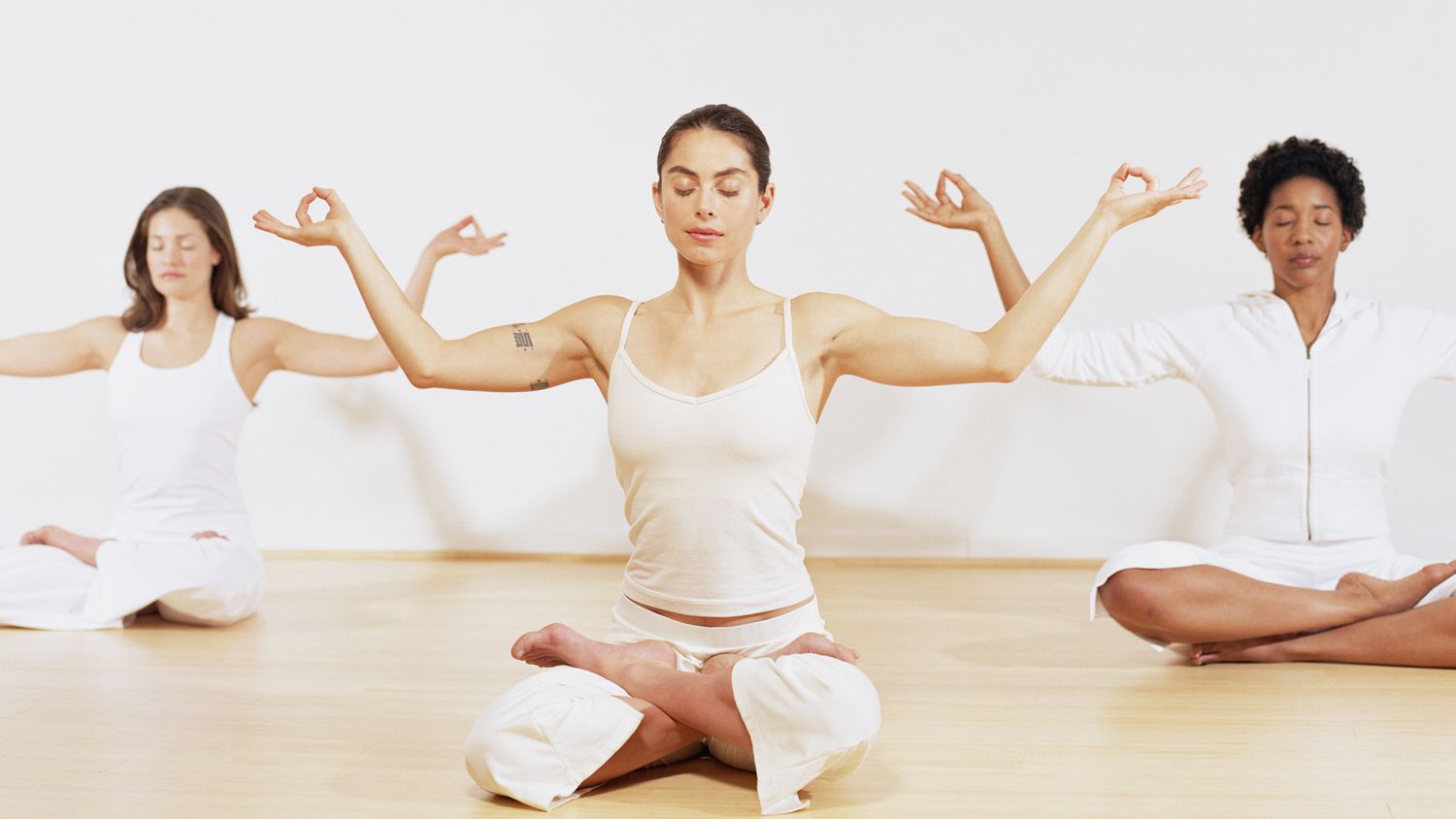Yoga philosophy is a branch of Hinduism that first emerged in the first millennium CE. It is one of the six orthodox schools of Hinduism. Its practice originated in India and has been a popular form of spirituality for thousands of years. Today, it is considered to be one of the most influential schools of philosophy. It differs from Samkhya, which is another orthodox branch of Hinduism.
The objective world in yoga philosophy is the result of the union of Prakriti and Purusha, which have no physical entity. This union of the two is called parinama and is the result of the process of evolution from the fusion of the male and female elements. The yogic goal is to achieve this non-dual state, which leads to the cultivation of certain attitudes and qualities. These qualities include lightness, clarity, and harmony.
Yogis practice Yoga by controlling their minds and regaining control. The stomach is lifted, the outer shoulders are relaxed, and the neck is held straight. The eyes are looking ahead. The arms are held at the sides of the body, but they are not limp or restless. Their fingers are energized and point downward. The yogi’s mind is a reservoir of energy that can be used for human upliftment. It is a powerful form of meditation.
Yoga’s name is derived from the Sanskrit word ‘yuj’, which means “join”. This is a term that is often translated to mean “union.” The yogic ideal of union is to achieve complete freedom, authenticity, and integrity. It ultimately leads to awareness of the Self and the other aspects of one’s existence. If you practice Yoga, you are bound to find it very beneficial for your spiritual development.

What Are the Different Types of Yoga?
There are several types of yoga and each of them has its own benefits and drawbacks. There is an Ashtanga class and a Hatha class. But what should you look for? You need to find a yoga class that meets your needs and is accessible to you. Iyengar yoga is slower and focuses on alignment. It is not a flowing form of yoga like Vinyasa. Iyengar yoga poses require long holding times and expand the breath. You can also use props to help you with the poses.
Vinyasa yoga focuses on the connection of breath and movement and emphasizes a smooth transition from one pose to the next. It can include balancing poses, backbends, and seated positions. Vinyasa yoga typically ends with a relaxation pose known as Savasana. It is a popular style of yoga and is suitable for beginners and experienced practitioners. It is a good option for people who want to incorporate some spirituality into their yoga practice.
Yin Yoga emphasizes passive stretching and alignment. It does not require any props. You can practice this type of yoga anytime. The key is to find a class that is right for you. If you find one that makes you feel comfortable, stick to it! The benefits of practicing yoga are well worth the time and effort. The more consistent you are, the better off you’ll be. So what are the different types of Yoga?
Hatha Yoga

If you’re a beginner at Hatha Yoga, you might wonder what the big deal is. Well, this article will give you a quick introduction to this ancient practice. Its origin is in Sanskrit, where haha means “life force,” and hatha means “method.”
The first chapter of Hatha Yoga outlines the basics of the practice. It begins with the posture known as kumbhaka. This is the primary pose of the practice. In this posture, the fingers point in the same direction, while the toes are pointing toward the ground. The weight of the body is in the feet. The head may hang freely while in the forward fold, but the hands resting on the hips are essential for recovering. In this pose, the body engages its muscles to lock in the breath and control the energy.
The next step in a hatha yoga class is to warm up. While it is not necessary to hold each pose as long as the instructor requires, you’re encouraged to sit quietly for a few minutes if you feel the need. The yoga postures also promote restful sleep. However, if you’re pregnant, you should consult with your physician before attempting these postures. It is also important to note that hatha yoga is not for everyone.
As the name implies, Hatha means “force” in Sanskrit. Historically, this term was practiced only by monks and the male offspring of priests. In common people’s minds, the practice was a magical and secret practice, and mystical stories were told about it. The practice began to gain popularity in India during the 15th century, as monks began demonstrating their asanas in public events. British photographers began publishing pictures of the monks performing these poses at events.
Vinyasa Yoga

Vinyasa Yoga is a modern form of yoga that emphasizes the transition between asanas. Modern forms of yoga include Ashtanga Vinyasa Yoga, Bikram Yoga, and Vinyasa Krama. Each style emphasizes movement and breath. The goal of Vinyasa Yoga is to enhance the quality of the body’s movement. Its benefits range from a lower risk of injury to a higher level of fitness.
Unlike other forms of yoga, Vinyasa yoga exercises are intense and can increase flexibility and mobility. Most Vinyasa poses are held for 30 to 120 seconds. The longer you hold a pose, the more you work your muscles and increase muscle growth. In fact, many studies have found that yoga can reduce smoking, anxiety, and stress. However, there are prerequisites for practicing Vinyasa yoga.
The first step in starting a Vinyasa Yoga class is to do some research. Do a quick search on the Internet to find a local studio. Take a look at the class description, review the instructor’s bio, and check out their Instagram page. Look for the vibe and the style of the yoga instructor that you feel most comfortable in. It is important to remember that different instructors teach different styles of vinyasa yoga, so you may want to try more than one before deciding on which style to try.
During a vinyasa yoga class, you may be required to repeat a certain sequence of sun salutations. Often, the sequence begins with chaturanga and ends with downward-facing dog. If you are confused about a particular sequence, follow the teacher’s instructions and make sure that you move from plank to downward dog. If you’re still confused, you can rest in child’s pose.
Yin Yoga

Yin Yoga is a style of slow-paced yoga that incorporates the principles of traditional Chinese medicine. Advanced practitioners can stay in an asana for as long as five minutes. The asanas are held for longer periods of time than other styles of yoga, making this form of yoga more conducive to healing injuries. Listed below are some of the benefits of Yin Yoga. Read on for more information. If you haven’t heard of it, here’s what you need to know.
Yin Yoga is a great way to release and stretch your entire body. Because it focuses on the fascia, it helps you to release tight muscles and restore your flexibility. As a bonus, it teaches you the correct mechanics of the body. This is great news for people recovering from injuries and those who want to strengthen their muscles and stretch them. Yin yoga is not for everyone, but it can benefit anyone.
Yin Yoga increases stress tolerance and reduces anxiety. It is important to note that while holding a pose for several minutes, your body will be in a parasympathetic state. This relaxed state of mind allows you to focus on your breath and the sensation of discomfort, which is a common symptom of stress. You may be surprised to learn that yin yoga can even help you reduce your stress levels. Just like yang yoga, yin yoga will also help you to become more calm and relaxed, helping you to face everyday challenges in life.
Ashtanga Yoga

The Primary Series of Ashtanga Yoga focuses on clearing energy channels and allowing prana to flow through the body. It also focuses on breathing through the nose, an exercise known as Nadi Shodhana. The Intermediate Series focuses on hip-opening poses and backbends, as well as variations of headstand. The Advanced Series focuses on a more challenging set of poses. These include variations of the basic asanas.
Although the basic asanas, or series of poses, of Ashtanga yoga are a good starting point for beginners, the sequence can be challenging for some people. The sequence is often similar every day, and modifications can be made if necessary. Whether you have sensitive joints, are a beginner, or just want a challenge, Ashtanga yoga can be a great choice. Listed below are some benefits of Ashtanga yoga.
As an added benefit of practicing Ashtanga yoga, it can help people work through difficult emotions and work towards emotional balance. This practice can reduce the risk of depression and anxiety, and help you improve your mental clarity. It can also help you improve physical strength and range of motion, which can lead to a more peaceful and relaxed life. Ashtanga yoga also helps people become healthier physically, as it can improve posture and flexibility. Ashtanga yoga can also help people with neuromuscular diseases and those with impaired vision.
In the Intermediate Series, you can advance your physical conditioning. The postures are more advanced, requiring deeper flexion and spinal twisting. They work with the parasympathetic nervous system and the vital nerves along the spinal axis. It’s best to practice these poses under the supervision of a yoga teacher. These advanced series poses are not for beginners and are best done under the supervision of a yoga teacher. This will ensure you get the most out of the practice and achieve your ultimate yoga goals.
Jivamukti Yoga

If you are looking for a good yoga class, consider taking a Jivmukti class. This style of yoga emphasizes meditation and music as part of the practice. It is recommended for both beginners and experienced yogis. Jivamukti Yoga focuses on five core tenets of yoga practice. The basic class teaches beginners the basics of yoga. The spiritual warrior class is designed to help people practice yoga within an hour.
The Jivamukti method focuses on observing the mind and meditating. It focuses on the five main aspects of Dhyana, including enhancing the inner tendency. It also focuses on observing the thoughts and attempting not to identify with them. The goal is to develop the belief that one is higher than their thoughts. Its practitioners strive to achieve the state of “spirituality” through meditation.
Jivamukti Yoga was founded by Sharon Gannon in NYC. Its philosophy is compassionate and holistic. The practice of yoga has shifted her life and she has become a certified teacher. In the beginning, she taught classes without air conditioning and chanted the Om. She and David Life instilled an important sense of grounding, spirituality, and humility into each student. With this, she teaches a unique style of yoga that helps people find the balance between the physical and the emotional bodies.
The benefits of Jivmukti Yoga are many. It is an excellent form of exercise, and can help improve range of motion, strengthen muscles, and relieve stress. Aside from these benefits, it also reduces the risk of injury. In addition to the physical benefits, Jivmukti Yoga can also be a great way to maintain a healthy mind and soul. It also inspires a vegan lifestyle and teaches respect for all living creatures.
Anusara Yoga

Anusara Yoga is the successor of the modern school of hatha yoga founded by John Friend in 1997. It focuses on the practice of kriyas or poses that strengthen the body and mind. This style of yoga has been gaining popularity in recent years as a result of its emphasis on meditation. Its practitioners are renowned for the benefits they derive from practicing yoga. Here are some of the benefits of the Anusara style.
The three major components of Anusara Yoga are the attitude, the alignment, and the action. The attitude relates to the way one perceives life, and the alignment pertains to how the body flows energy. These three principles are directly related to the practice of yoga, and when practiced properly, provide the practitioner with a sense of stability and freedom. A heightened awareness of these three components allows practitioners to experience more benefits than they might otherwise receive.
Anusara yoga classes begin with a brief prayer and focused breathing. The instructor guides the class through a progressive sequence of poses, including actions within the pose. Through the breathwork, students develop more range of motion and ease chronic muscle pain. Anusara yoga teachers use creative, precise methods of execution, as well as integrating spiritual aspects of the practice. Ultimately, students practice yoga to open the heart and the mind to its evolution.
Kundalini Yoga

One of the most popular aspects of Kundalini yoga is its breathing technique. The breath of fire is a practice in which you try to exhale your breath as quickly as possible while keeping control of your inhalation through your nose. It’s difficult to master, especially for beginners, but the benefits of the breath of fire are numerous. Continue reading to learn about the benefits of this breathing technique. Kundalini yoga is a powerful way to open up your body and raise your energy levels.
Although Kundalini Yoga is a great practice for people of all ages and physical fitness levels, it’s important to remember that it must be practiced properly to reap its full benefits. Just like electricity, Kundalini Yoga must be practiced properly to achieve the most benefit. Most people practice Kundalini in a limited way, but if you learn how to maximize your practice, you can raise your consciousness to a new level.
The underlying philosophy of Kundalini is to awaken our consciousness. The aim of all yoga is to experience life more deeply and intensely. Everyone is striving to awaken their kundalini, but how they do it is different from how they practice it today. For more information about how to raise your kundalini, check out “Mystic’s Musings.” Join our Kundalini Yoga Teacher Training Course and learn this Yoga systermatically.
Kriya Yoga – The Science of Self-Realization

Kriya Yoga is the active aspect of yoga. There are three types of kriya as defined by Patanjali in the Yoga Sutras:
The practice of Kriya Yoga involves mentally directing life energy to revolve around six spinal centers that correspond to the twelve astral signs. A half-minute of such activity produces subtle progress in evolution. One year of Kriya activity produces a natural unfolding of the spiritual self. Practicing Kriya can transform one’s life. It is said to transform people into enlightened beings. Kriya Yoga is a science of self-realization.
The main goal of these kriyas is to cleanse the internal organs and pranic flow between the major energy centers in the body. These kriyas can improve your overall health, reduce your risk of sickness, and bring a greater sense of well-being. There are several kriyas, but only a few are safe for the general population. They are effective for anyone who is looking to improve their health and vitality.
When practicing kriyas, you should relax all of your muscle groups. Focus on an idea that brings you peace. Your mind may become overloaded with thoughts as you practice Kriyas. Allow these thoughts to pass through your mind and come back to your initial relaxing thought. This process should continue for a few minutes. As you become more adept at practicing this technique, you can gradually increase the time you spend in each pose. If you want to experience the full benefits of Kriya Yoga, it is important to find the right teacher.
Karma Yoga
If you’re a newcomer to the concept of Karma Yoga, you may be wondering what it is and how it differs from other forms of meditation. This article will explain how to practice Karma Yoga, as well as some of the benefits and limitations of this spiritual path. If you’re interested in learning more, check out the links below. This article will also discuss the benefits of Karma Yoga, as well as what you should avoid.
Essentially, Karma Yoga is the practice of carrying out duties without attachment to the results. It is mentioned in the Bhagavad Gita as one of the paths to spiritual liberation. According to Krishna, karma is the work of God, and it should be done with dedication and care. It requires faith in a higher reality and positive thinking. It also promotes the wisdom of living a good life. In the ancient Indian text, the term ‘dharma’ refers to the way in which a person should live their life.
The term Karma Yoga refers to the path of action that leads to selfless compassion. The concept of karma yoga is clearly demonstrated in the practice of seva (selfless service), which is the most basic and simplest form of karma yoga. This type of service turns the spirit of karma into visible behavior, and is often referred to as karma yoga. It prompts people to serve the community and to raise funds for charity.








